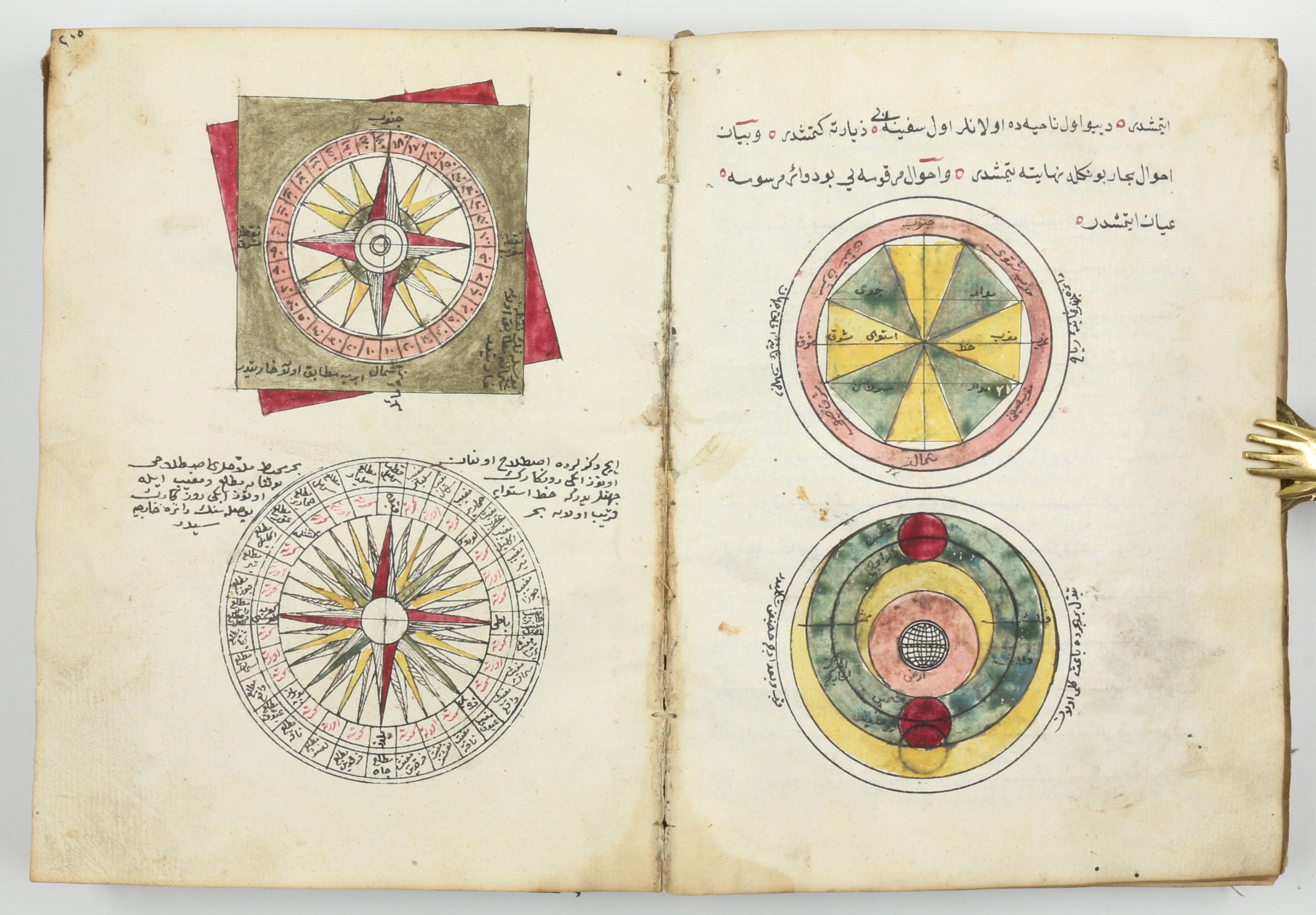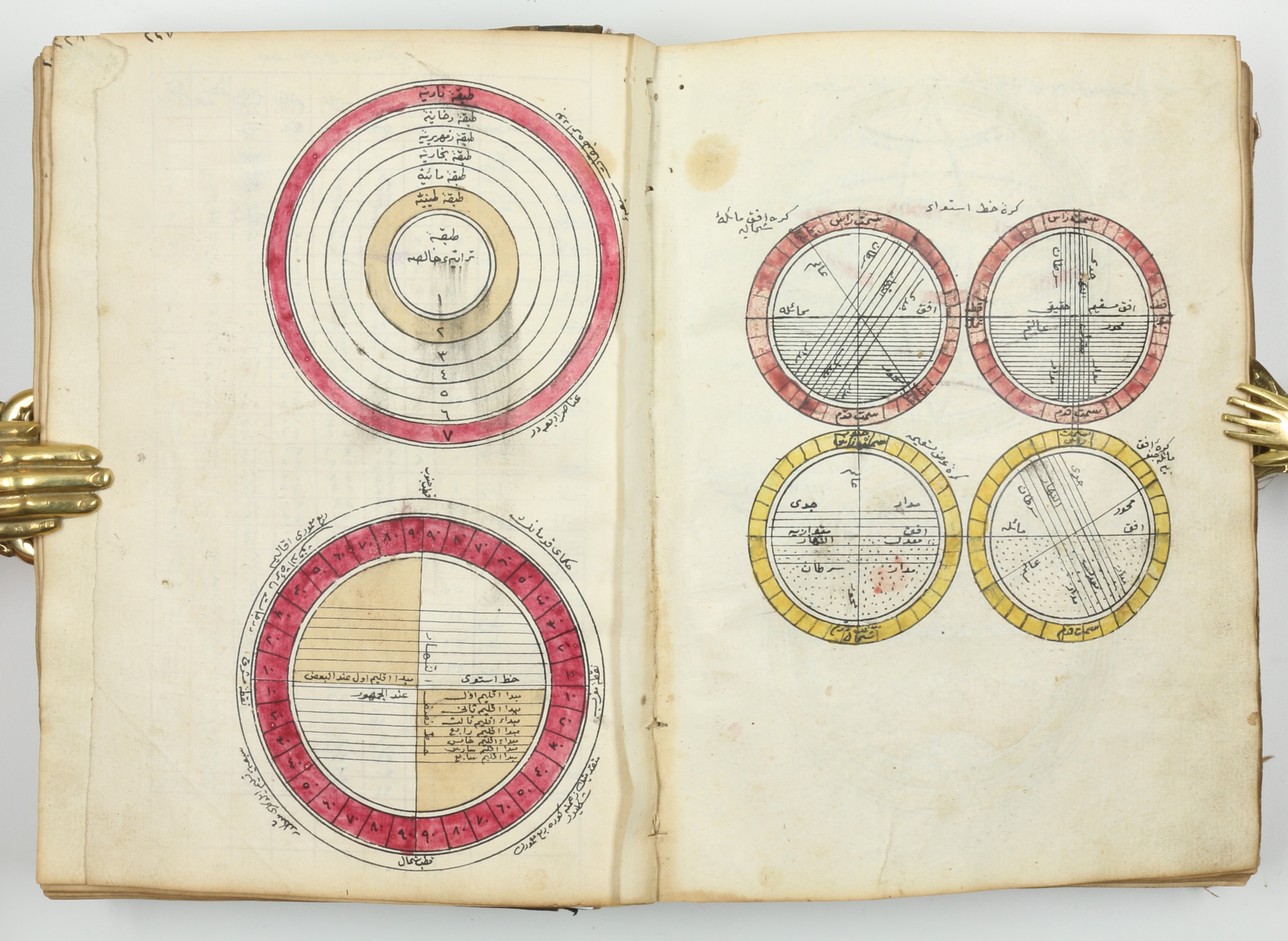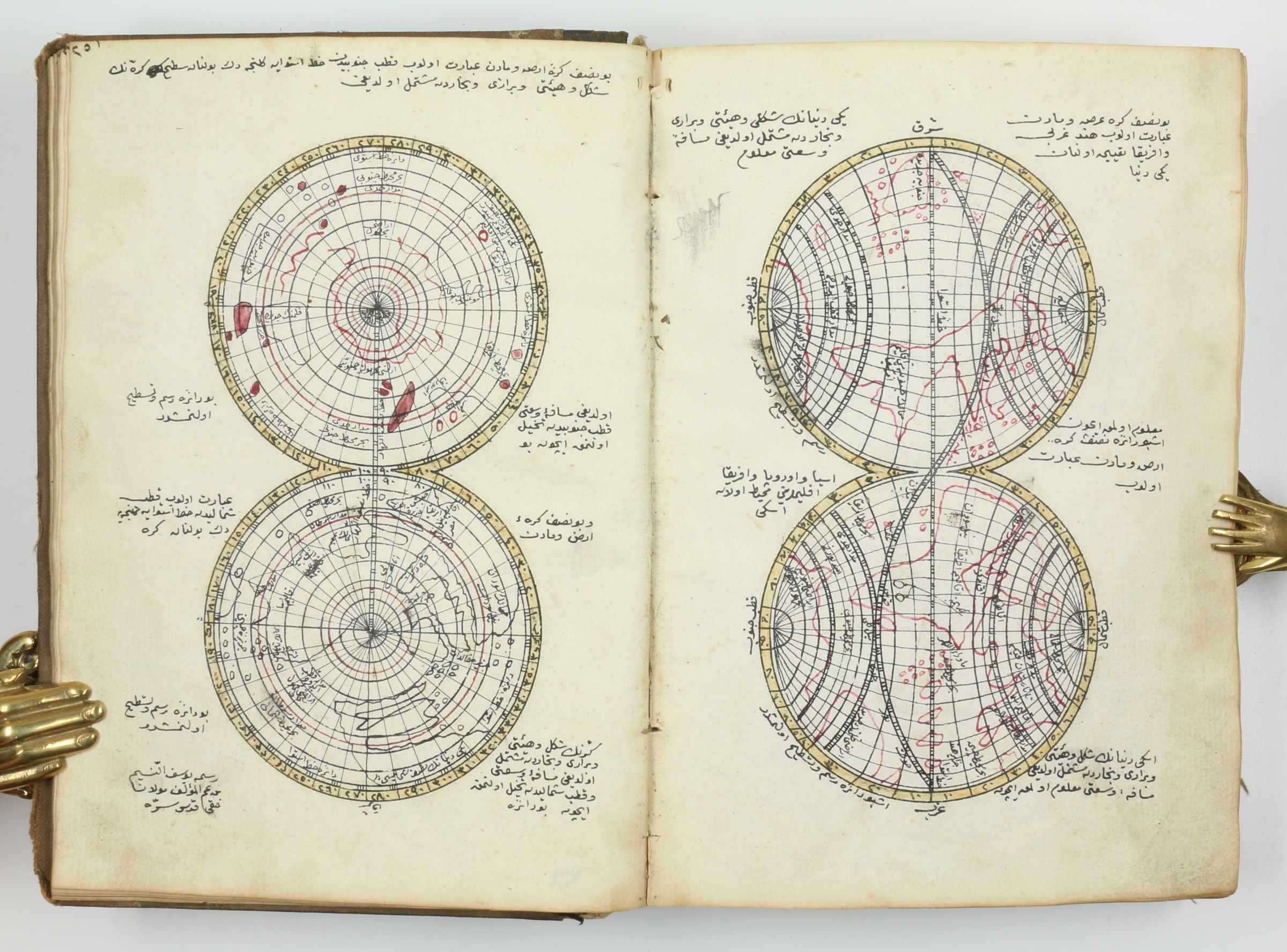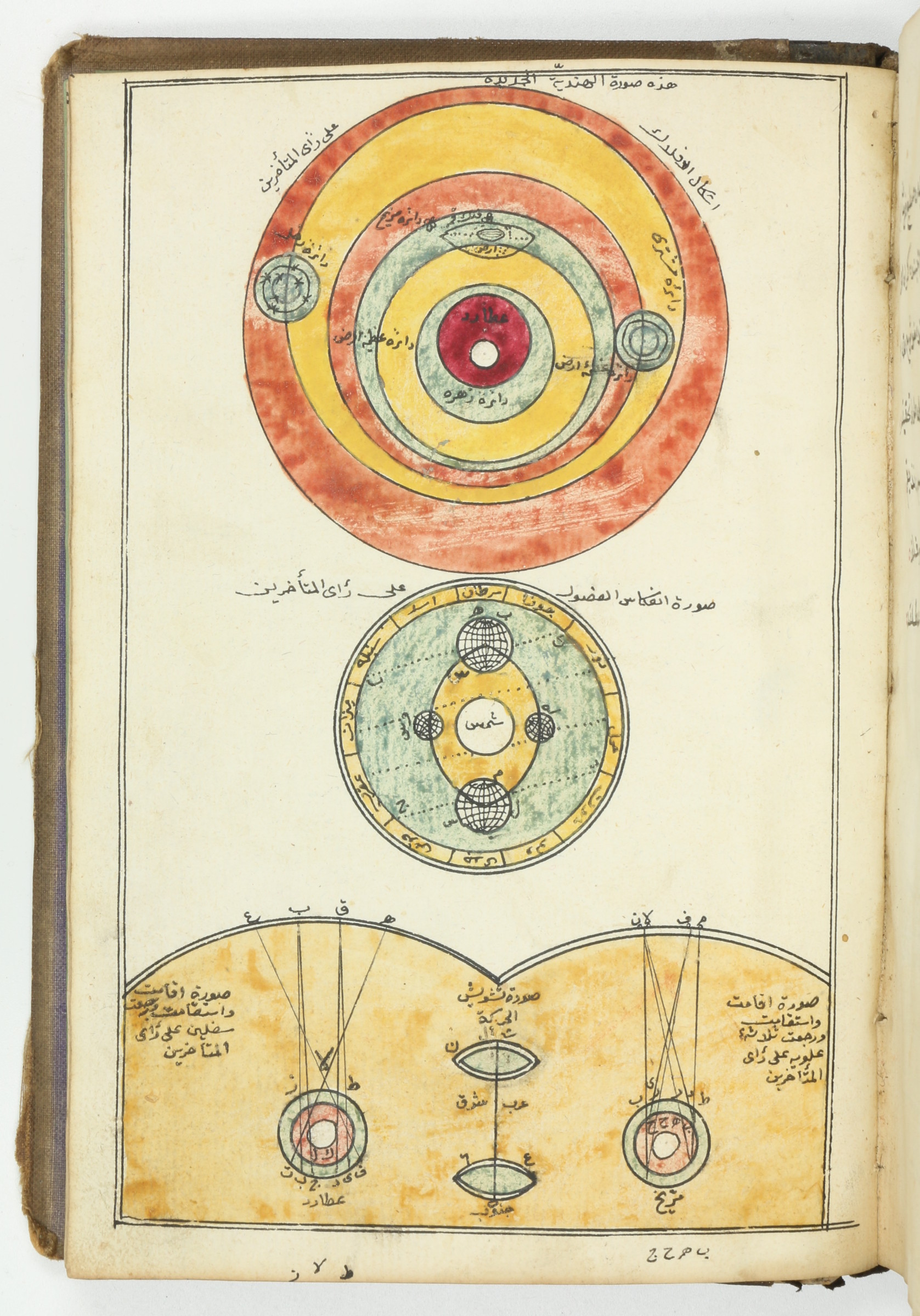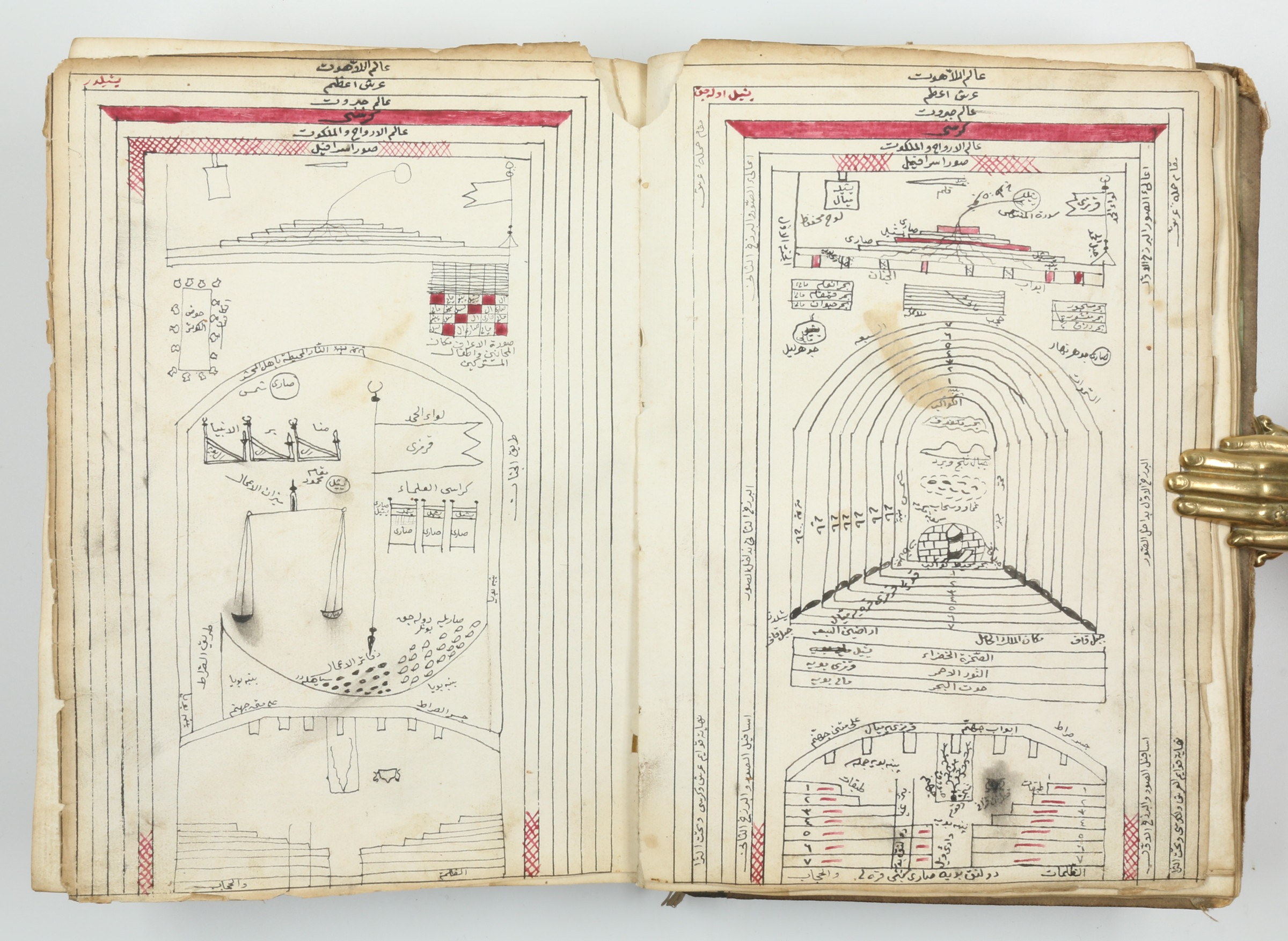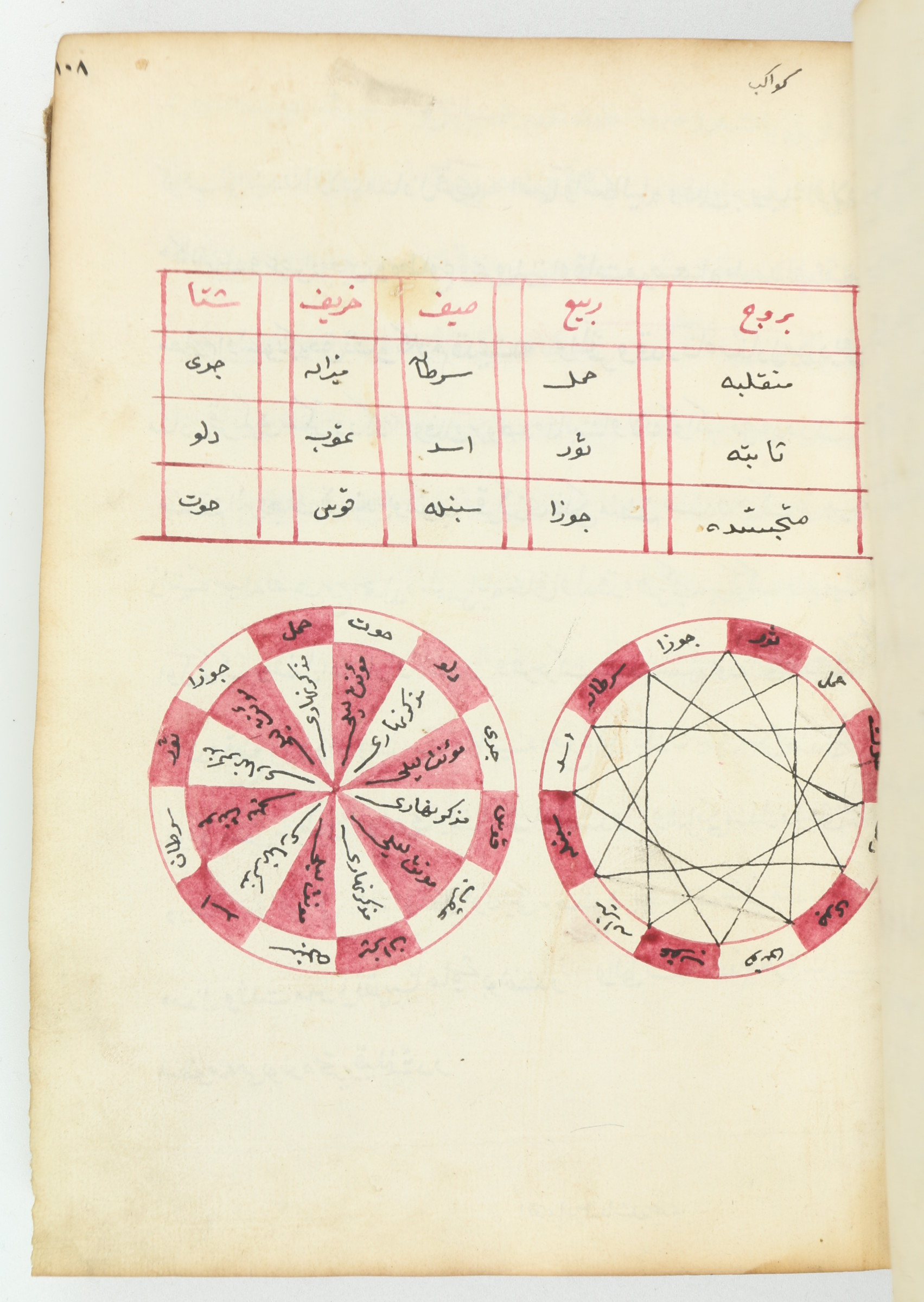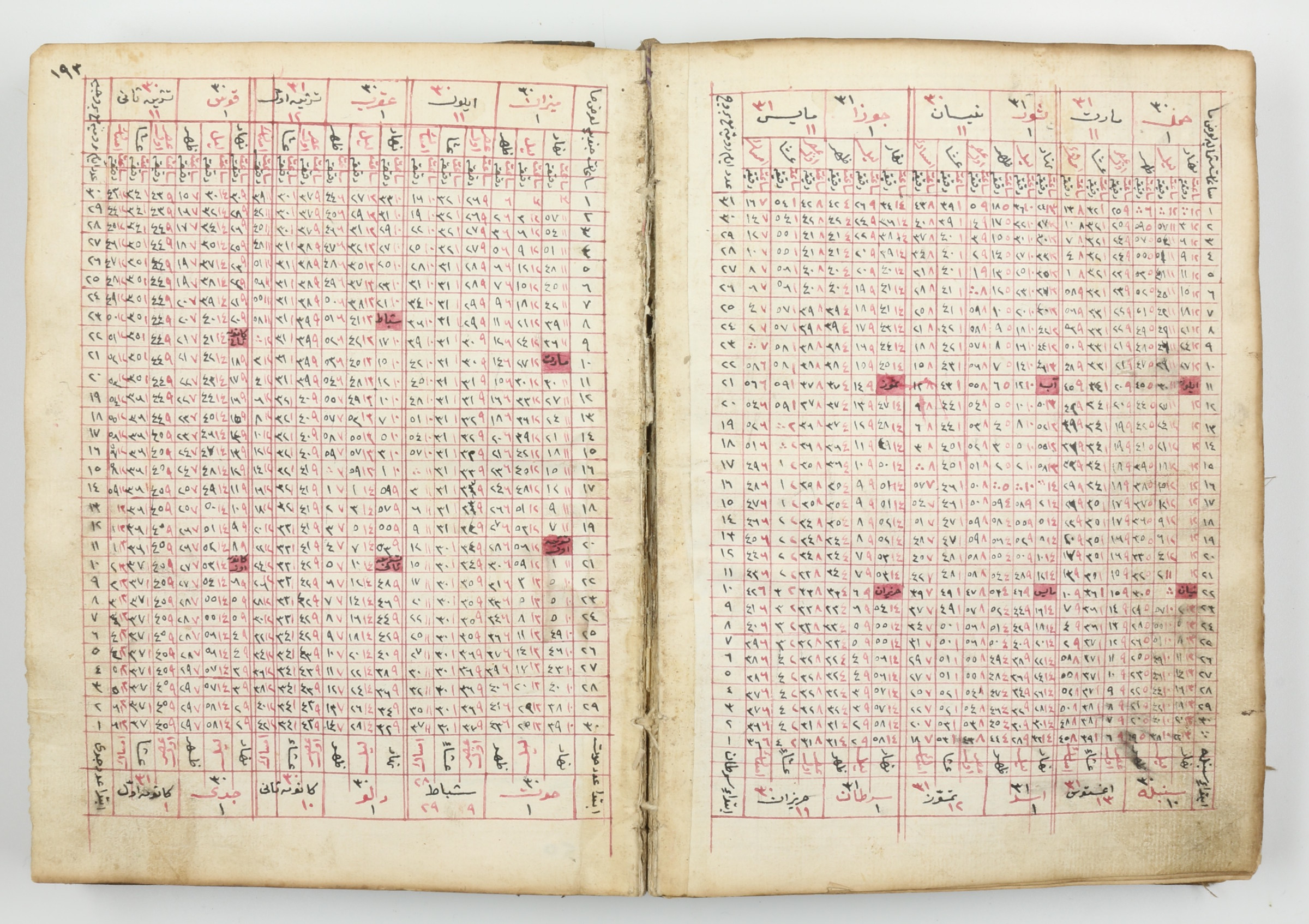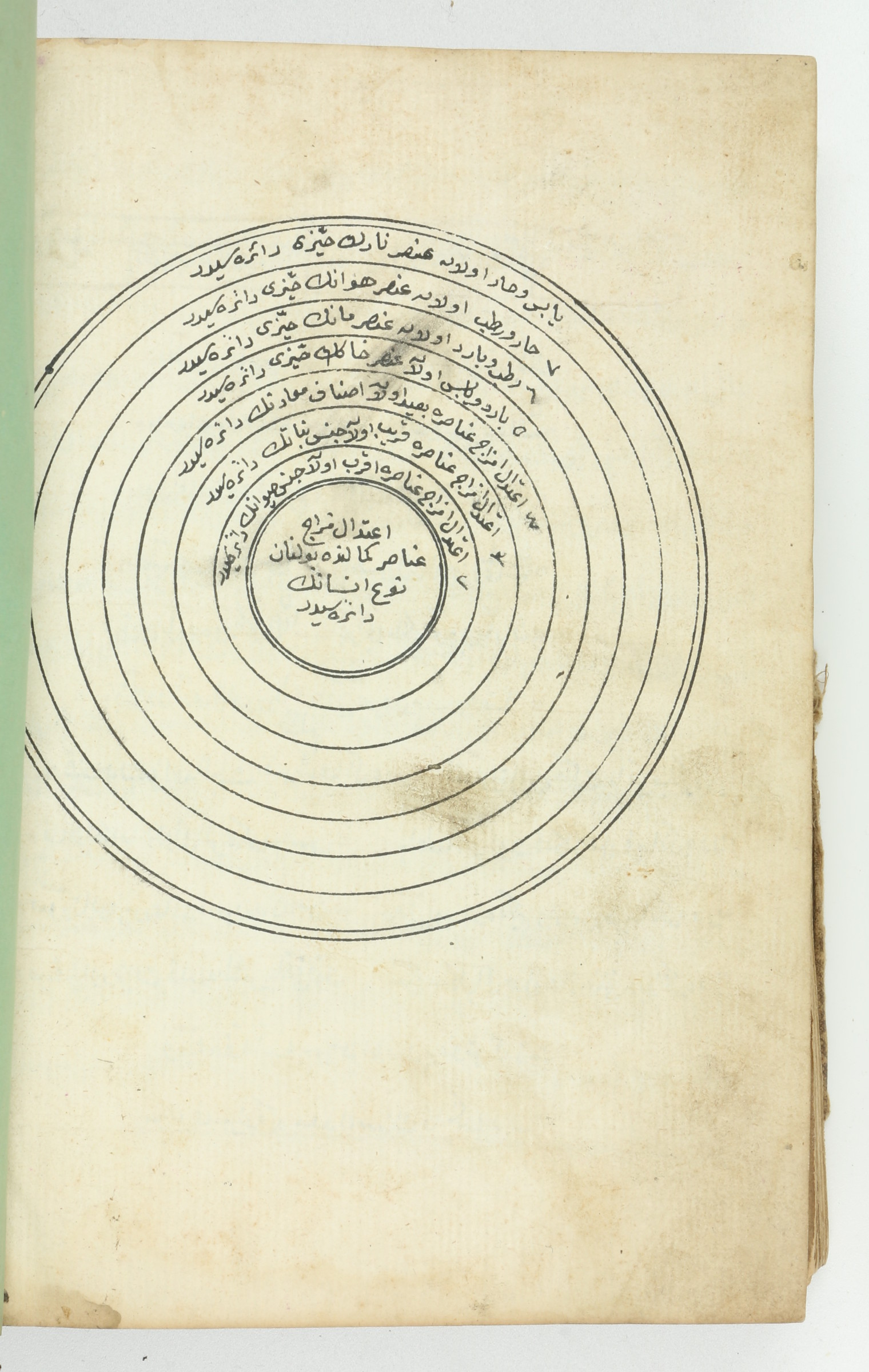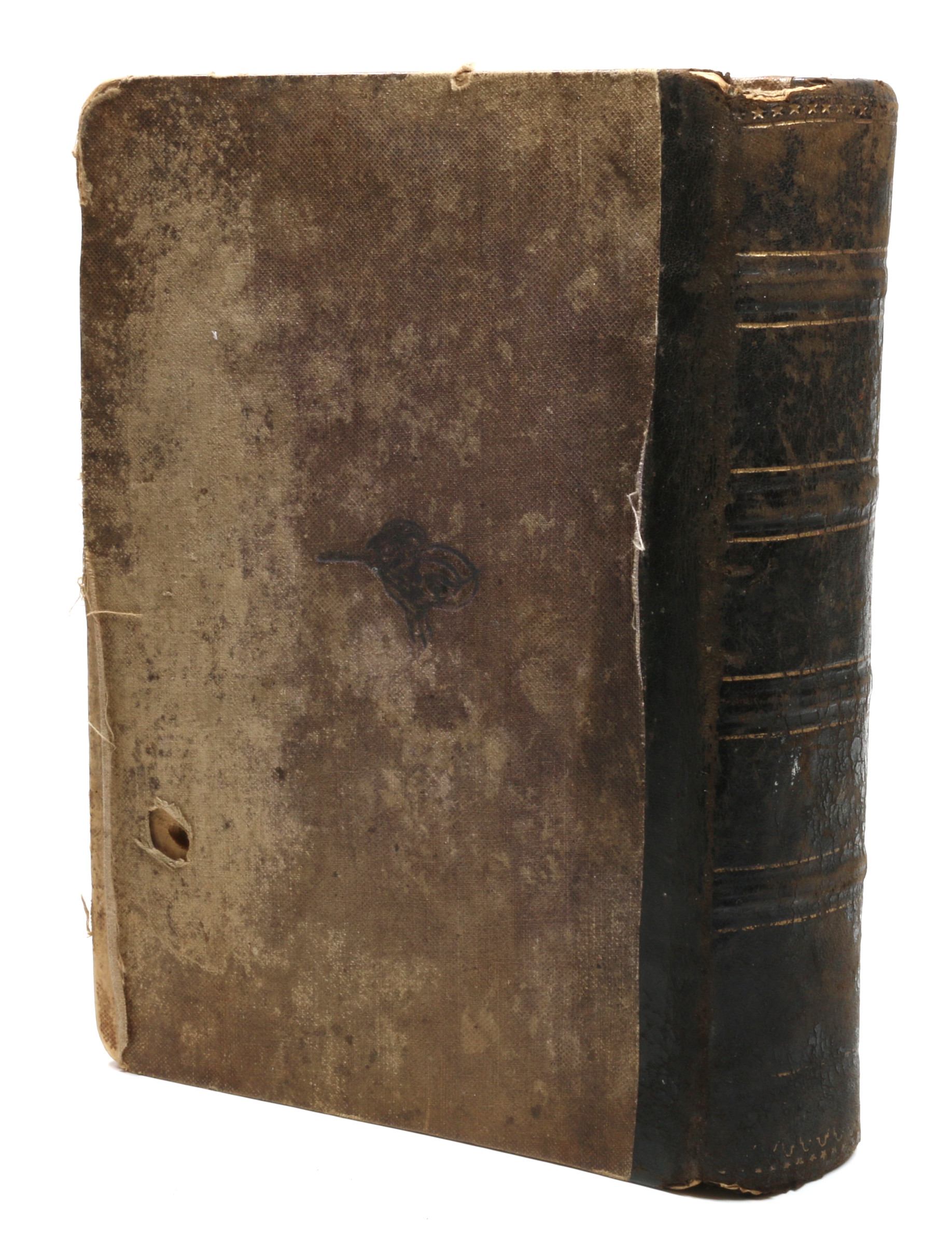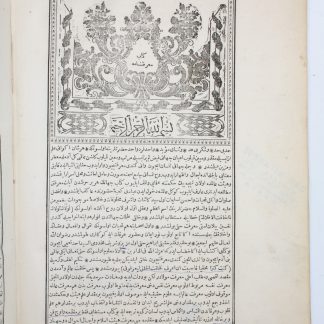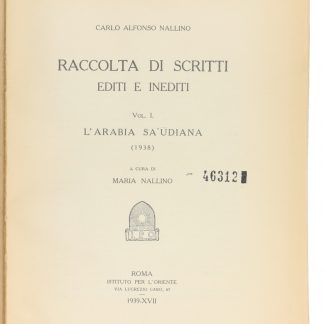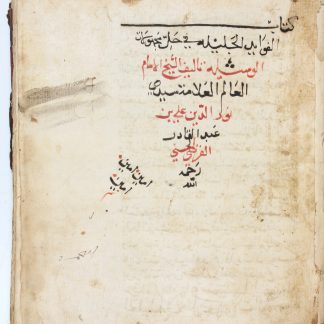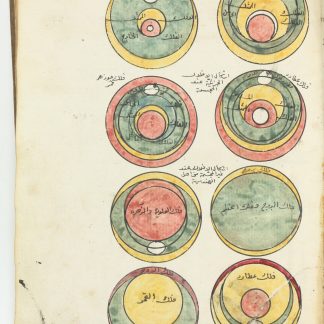Manuscript of the first treatment of Copernican astronomy by a Muslim scholar
Marifetname [The Book of Knowledge and Skills].
4to (ca. 175 x 230 mm). Ottoman Turkish manuscript on paper. 11-277 numbered leaves (lacking the first 10 ff. from the front of the volume, all likely from the Fihrist), per extensum, 16 lines in black Naskh, words and headings in red throughout, over ten leaves with full-page illustrations and diagrams, some of these in colour, including the double-page illustration of the globe as spheres, many tables and diagrams also appearing throughout the text. Contemporary leather-backed cloth boards, cloth with stamped tughra of sultan to covers (head-over-heels).
€ 9.500,00
A fine early 19th century manuscript copy of the famous scholarly encyclopedia, not printed until 1835 (in Bulaq). The "Marifetname", or "Book of Gnosis" is a compilation of astronomical, astrological, mathematical, anatomical, psychological, philosophical as well as mystical religious texts. It is famous for containing the first treatment of post-Copernican astronomy by a Muslim scholar, placing the sun at the center of the universe.
Ibrahim Haqqi Erzurumi (1703-80) is considered an outstanding figure of 18th century Ottoman Turkey. Based on an immense knowledge of the Sufi branch of Islam as well as his studies in Western science, he devoted himself to the domains of both religion and science, considering both a means of approaching God.
Although Ibrahim Haqqi completed his work in 1756, very few surviving manuscripts predate the first quarter of the nineteenth century. The British Library holds a copy (MS.Or.12964) compiled in 1235 H (1820 CE), and the earliest known manuscript copy was long thought to be that in the Khalili collection, dated 1226 H / 1811 CE (J. M. Rogers, Empire of the Sultans, 1995, no. 74, pp. 121 & 123), but a copy predating this by seven years was sold by Bloomsbury in 2014 (7 December sale, lot 123), and a manuscript dated to ca. 1760 was offered by Inlibris.
While this copy of the text is in a relatively informal hand, the diagrams have been executed to an excellent standard. The text and drawings were likely executed in different workshops, as the scribe allocated far more space than necessary for the illustrator, resulting in numerous blank pages throughout the text.
Leather spine worn with slight loss to leather at extremities, cloth also worn with loss. Contemporary foliation throughout, a few scuffs and smudges. Spine cracked with a few individual gatherings becoming loose. Overall a clean copy.



